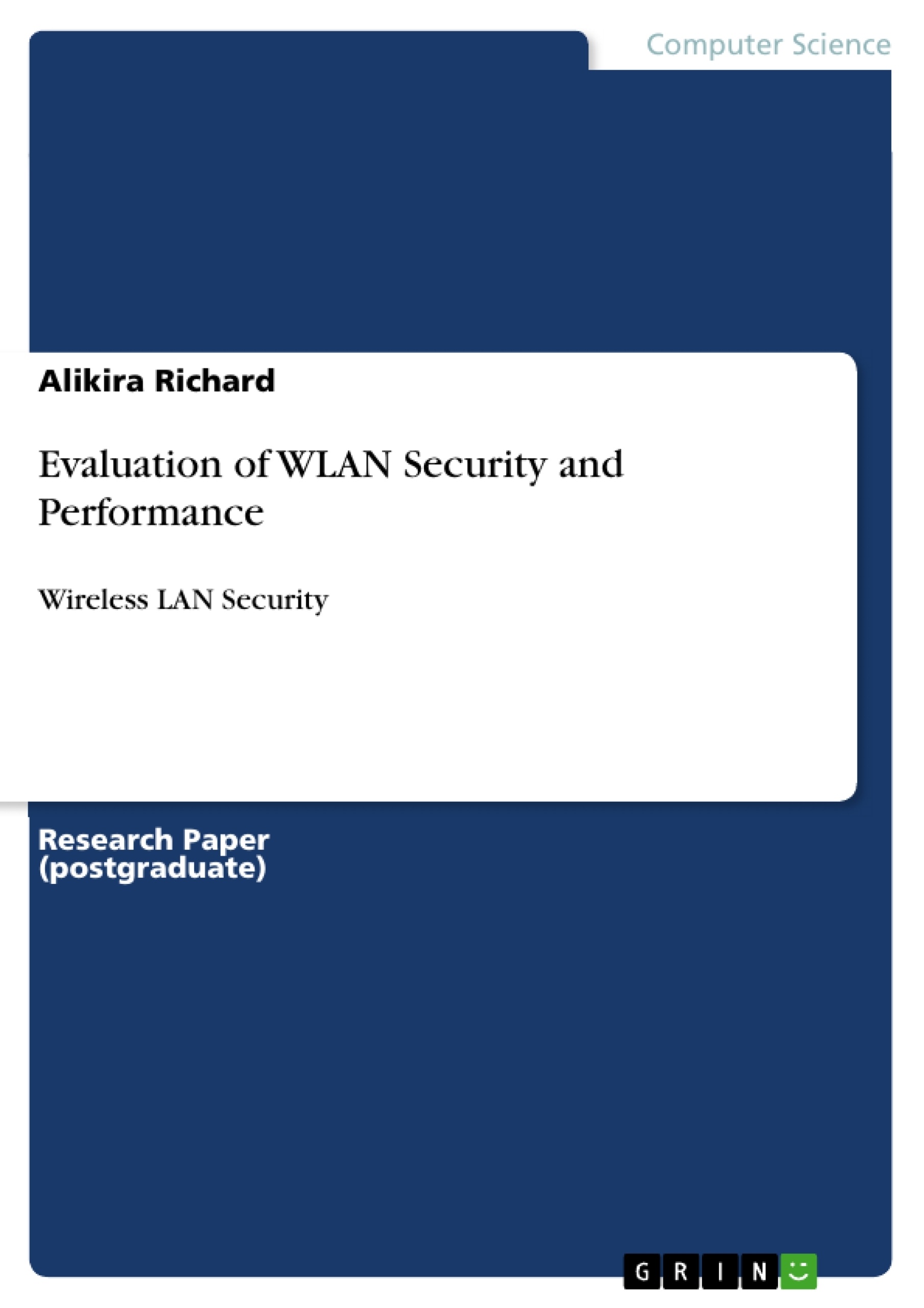This report addresses the reality of Wireless LAN security and performance. It provides an overview of security mechanisms and explains how security works in Wireless LAN networks. An in depth analysis of the Wired Equivalent Privacy (WEP), Wi-Fi protected access (WPA) and WPA2 standards is presented. The security vulnerabilities that exist in them are analyzed and explained. An experiment involving four devices (Dlink, Linksys, nanostationloco2 and a WBS) was done at Kampala international university. It was discovered from literature that most people prefer using WEP yet it is least secure. One study says 30% of all WLANs detected during network discovery experiment operate with WEP encryption. The study further proved that WEP can be compromised with 100% success. It was also discovered during the experiment that factors such as line of sight, obstruction, distance, antenna type, channel being used all affect network performance. The findings of this experiment can be used as guideline choosing the right encryption method and in designing a WLAN.
Table of Contents
- CHAPTER ONE
- INTRODUCTION
- Background
- Statement of the problem
- Objectives of the study
- Research questions
- Scope of the study
- Significance of the study
- INTRODUCTION
- CHAPTER TWO
- LITERATURE REVIEW
- Wireless LAN Security
- WEP - Wired Equivalent Privacy
- LITERATURE REVIEW
Objectives and Key Themes
This report aims to evaluate the security and performance of Wireless LAN (WLAN) networks. It examines the effectiveness of different encryption mechanisms and identifies factors that impact WLAN performance. The report also explores security vulnerabilities within existing encryption standards.- Security Mechanisms in WLAN Networks
- Analysis of WEP, WPA, and WPA2 Standards
- Security Vulnerabilities in WLAN Encryption
- Factors Affecting WLAN Performance
- Guidelines for Choosing Encryption Methods and Designing WLANs
Chapter Summaries
Chapter One: Introduction
This chapter introduces the topic of WLAN security and performance, highlighting the increasing reliance on wireless networks and the associated security challenges. It discusses the problem of unauthorized access, particularly in environments like Kampala International University, where the lack of robust security measures led to network overload and denial of service. The chapter outlines the study's objectives, including examining current WLAN security issues, identifying performance-affecting factors, and suggesting improvements for both security and performance.Chapter Two: Literature Review
This chapter delves into the various encryption technologies used in WLAN communication, namely WEP, WPA, and WPA2. It examines the strengths and weaknesses of each technology in terms of confidentiality, integrity, and authentication, exploring the vulnerabilities inherent in these systems. The chapter provides a historical overview of the evolution of these encryption methods, highlighting the development of WPA and WPA2 as improvements over the initially flawed WEP standard.Keywords
This report focuses on the security and performance of Wireless Local Area Networks (WLANs). Key concepts include encryption mechanisms, security vulnerabilities, performance factors, WEP, WPA, WPA2, network design, and security best practices. The report analyzes the effectiveness of various encryption methods and explores factors that can impact WLAN performance.- Citar trabajo
- Alikira Richard (Autor), 2012, Evaluation of WLAN Security and Performance, Múnich, GRIN Verlag, https://www.grin.com/document/205389



